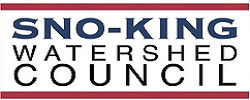Join Sno-King Watershed Council to improve watershed health and save salmon!
Become a Sno-King Watershed Council Water Watcher. Collect data on a local stream to monitor its health.
Join our habitat restoration program, Swamp Creek Watershed Restoration Project, to restore native habitat in the Swamp Creek corridor.
We have many partners working in the watershed for salmon. Here are just a few opportunities to engage in hands on work for the benefit of our salmon neighbors:
Join UW Bothell’s Professor Jeffrey Jensen in his North Lake Washington SalmonWatchers Program. Learn more here and sign up here.
Whale Scout does land based whale watching and restores salmon habitat at the former Wayne Golf Course in Bothell so whales have more of their favorite food–chinook salmon–available.
Friends of North Creek Forest stewards an important forested part of our watershed in Bothell. They have tons of great events, including habitat restoration work parties.
Shelton View Forest Stewardship Association is working diligently to keep a forested area in Bothell healthy for all and has habitat restoration work parties and other ways to get involved.
We need each other! Together we can do a lot for salmon
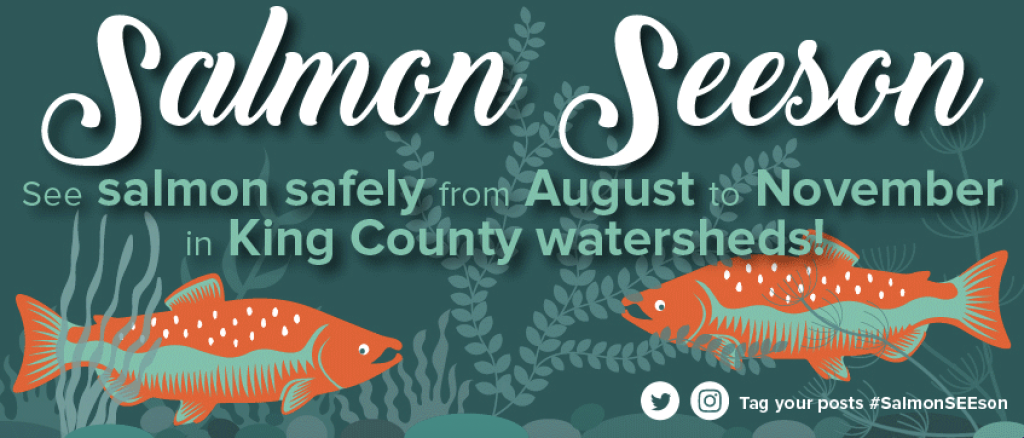
Find out where to see salmon coming home to spawn in the Lake Washington/Cedar/Sammamish Watershed. Learn about the Snoqualmie Tribe Ancestral Land Movement before you go. Take the pledge and practice mindfulness when out and about.
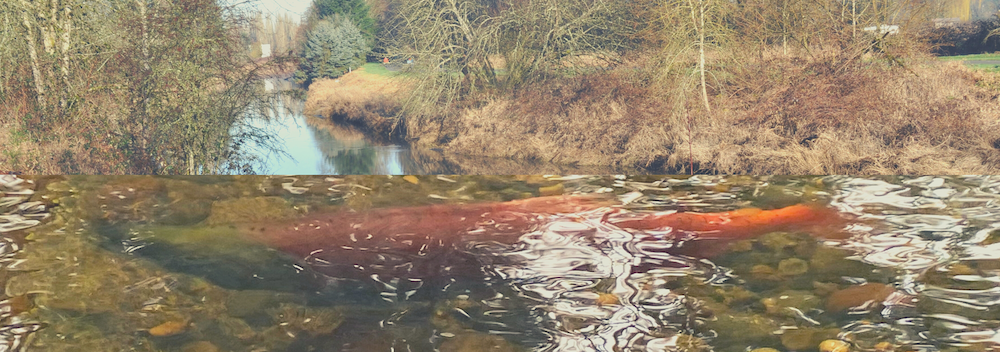
The Sammamish River is part of the Lake Washington/Cedar/Sammamish Watershed (WRIA 8). There are 7 species of salmon in the Pacific Northwest. The Sammamish River is home to 5!
Chinook (Oncorhynchus tshawytscha)
WEIGHT: 40 pounds but can be up to 120 pounds
LENGTH: 3 feet
LIFESPAN: Up to 7 years, typically 3 to 4 years
THREATS: Climate change, Commercial and recreational fishing, Habitat degradation, Habitat impediments (dams), Habitat loss
Coho (Oncorhynchus kisutch)
WEIGHT: 8 pounds but can be up to 35 pounds
LENGTH: 2 feet
LIFESPAN: 2 to 5 years
THREATS: Climate change, Commercial and recreational fishing, Habitat degradation, Habitat impediments (dams), Habitat loss
Sockeye (Oncorhynchus nerka)
WEIGHT: 8 pounds
LENGTH: Up to 3 feet
LIFESPAN: 5 years
THREATS: Climate change, Commercial and recreational fishing, Habitat degradation, Habitat impediments (dams), Habitat loss
Steelhead (Oncorhynchus mykiss)
WEIGHT: Up to 55 pounds
LENGTH: Up to 45 inches
LIFESPAN: Up to 11 years
THREATS: Climate change, Commercial and recreational fishing, Habitat degradation, Habitat impediments (dams), Habitat loss
Cutthroat (Oncorhynchus clarkii)
WEIGHT: 1 to 4 pounds
LENGTH: Up to 20 inches
LIFESPAN: Up to 9 years, typically 5 years
THREATS: Climate change, Commercial and recreational fishing, Habitat degradation, Habitat impediments (dams), Habitat loss
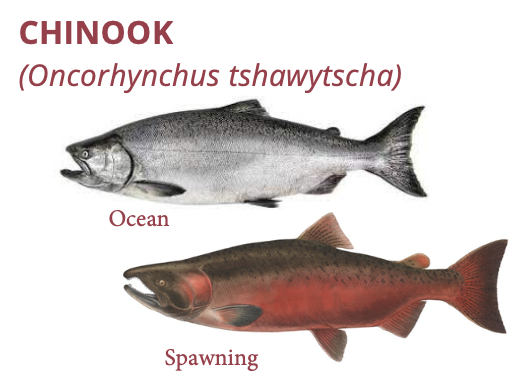
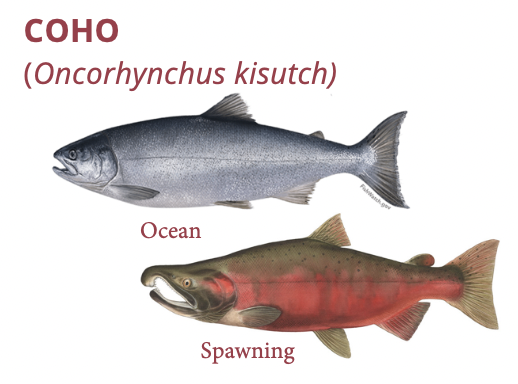
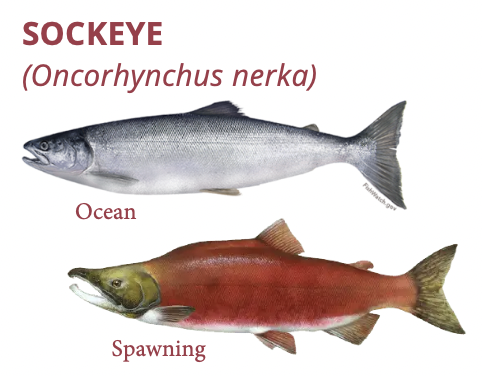
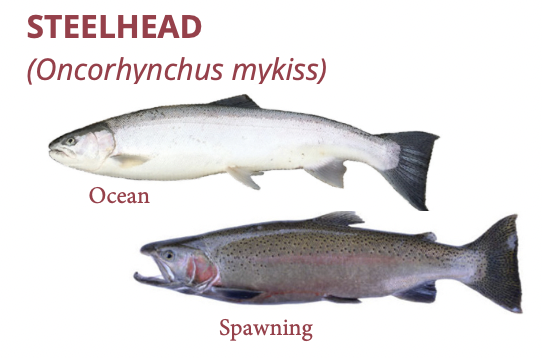

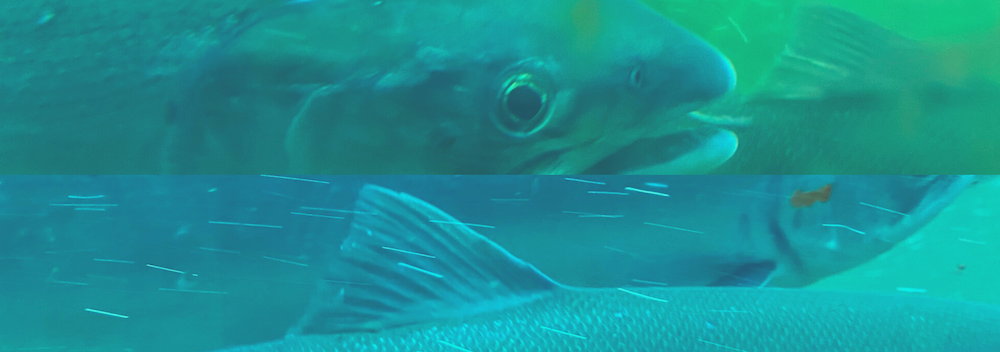
ABOUT SALMON
• Salmon are anadromous. They begin their life cycle in freshwater, spend most of their life in saltwater, and return to their natal stream to spawn.
• Kokanee are a land locked relative of sockeye found in the Sammamish River watershed.
• Rainbow trout (relatives of steelhead) and freshwater cutthroat trout (relatives of coastal cutthroat) are also found in the watershed.
• Salmon spend 2-8 years in the marine environment before returning to their natal stream to spawn.
• Spawning female salmon lay between 1,500 to 10,000 eggs. Approximately 1 out of 1,000 of those salmon will return to their natal stream to spawn.
• Salmon in the Sammamish River watershed (and many other watersheds) are in trouble due to such factors as habitat loss, pollution, overfishing, and climate change.
YOU CAN HELP
• Support funding for salmon habitat restoration. Contact the Governor’s office and your state legislators to let them know you support fully funding salmon recovery-related programs in the next capital budget.
• Practice natural yard care, including planting native plants and eliminating the use of pesticides.
• Green your shoreline. Take out bulkheads and armoring on your Puget Sound or lakefront property.
• Fix your car leaks.
• Take your car to a commercial carwash.
• Minimize car travel. Ride your bike or use public transportation.
• Safely dispose of medications.
• Conserve water at home.
• Volunteer at habitat restoration events.
• Tell a friend how amazing salmon are!
